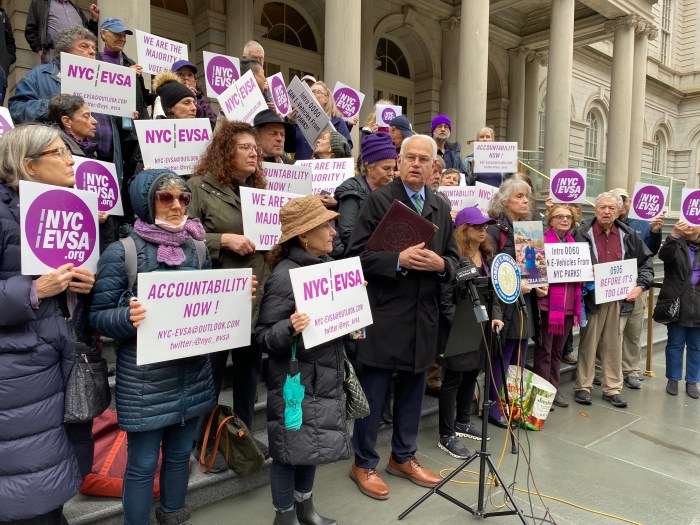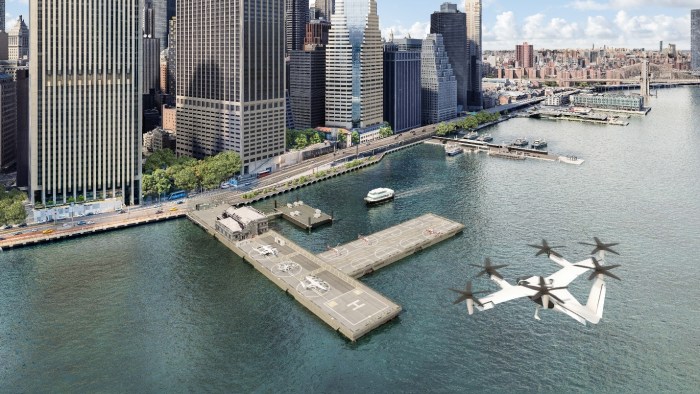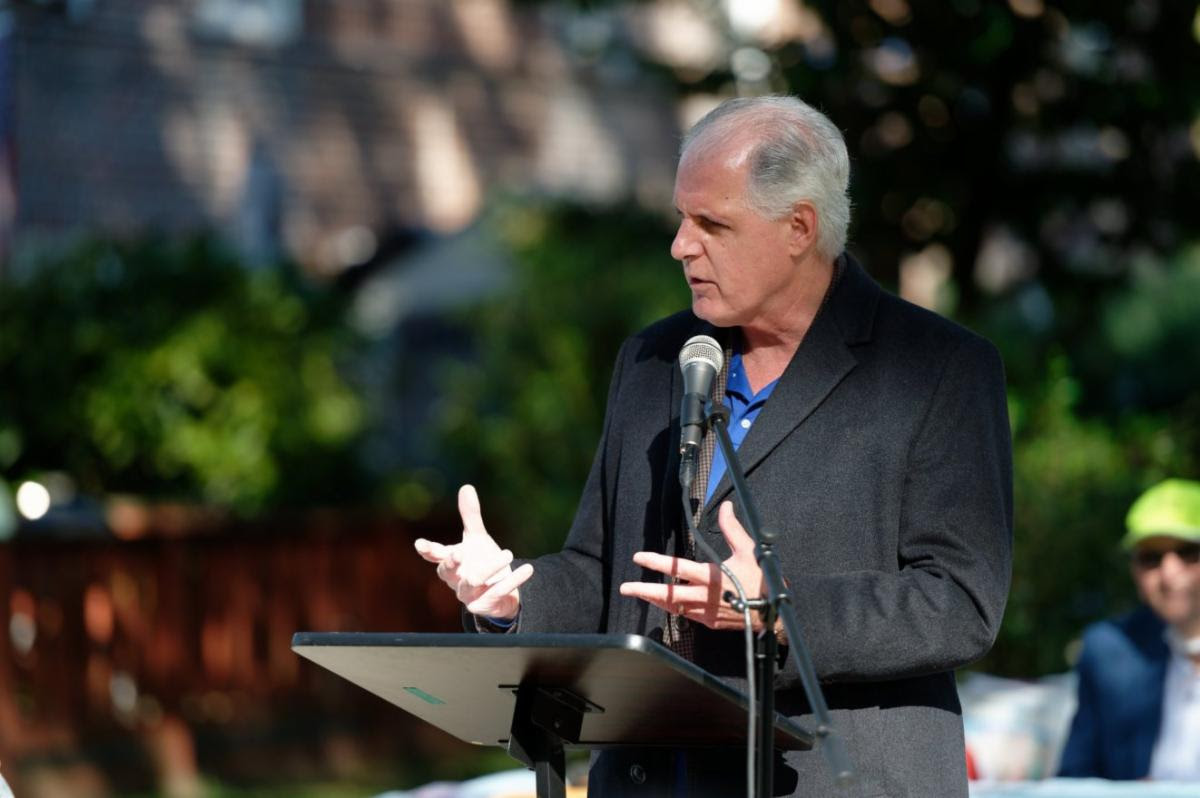
The head of MTA Transit is vowing to crackdown on bus fare evaders, claiming one in five bus riders avoid paying for their trips.
Across local and Select Bus Service routes, 21.9 percent of riders avoided the fare during the fourth quarter, according to MTA data. That would represent a 5.9 percent increase from the same time last year. NYC Transit president Andy Byford responded at a committee meeting Monday by pushing for police enforcement on buses, and the expansion of turnstile surveillance cameras in subways as part of a larger campaign.
“Before anyone challenges us that we’re passive to this — no, we’re not,” said Byford. “Can we just fix it straight away? No. This is going to be a long hard campaign, but it’s one that we have to win.”
Last year, fare-beating on subways and buses resulted in a loss of $225 million, by MTA estimates, with $128 million lost from bus fare evasion. The authority has harped on subway turnstile jumping, too, though that occurred at a lower rate of 3.2 percent during 2018.
As the MTA campaigns against fare evaders, criminal justice reformers and other advocates have raised concerns with the racial bias of policing in the transit system, and has questioned the MTA’s own methodologies of calculating farebeating. The authority has provided very few details on the demographics of offenders and even how it’s tracking the crime.
Fare evasion is calculated by survey samples of select subway stations and bus routes across all boroughs. Those surveys take place during peak and off-peak commuting hours and are then applied across the system. The authority surveyed 140 bus routes — about 59 percent of all its local routes — but did not provide details on how many surveys were taken or for how long each survey lasted.
And while the MTA wrings its hands over city commuters, the authority appears less concerned with its railroads, where it fails to collect fares from a greater portion of riders than on the subways. For the Long Island Rail Road and Metro-North, the MTA estimates it has not collected fares from 6.1 percent of riders and 4 percent of riders, respectively, so far this year.
Some, like MTA board member David Jones, have called fare evasion a crime of poverty. He’s worked to highlight the disparity in fare evasion enforcement across the city.
“There was selective enforcement going on,” said Jones, who is also the president and CEO of the Community Service Society of New York. “In 2016, 93 percent of those stopped and prosecuted [for fare evasion] were black and Latino. There was virtually no enforcement going on in other parts of the system.”
Others were less concerned about selective enforcement. At the committee meeting, MTA board member Charles Moerdler threw every name in the book at fare beaters — “deadbeats,” “lawbreakers,” and “thieves” — as he called for a reversal of policies to decriminalize the offense. Moerdler himself has on at least two occasions reportedly used MTA paraphernalia to park in non-parking zones.
“They are people who don’t give a damn about their fellow passengers,” Moerdler said. “They are people who take up, approximately … one third of the entire fare increase that we have put through in the past few weeks.”
While the city has slowly rolled out a limited pilot for discounted MetroCards for low-income New Yorkers, Robert Gangi, the head of the Police Reform Organization Project, said that the city should move to a free fare for those New Yorkers. In London, for instance, Transport for London offers free bus and tram fares for students or workers under the age of 18.
“The policy should not be using the law enforcement apparatus to address a problem that is better addressed through other means, that is less punitive and provides more help than harm on the people who need to use public transportation,” Gangi said.
The MTA, however, remains committed to deploying law enforcement personnel.
There are vastly higher rates of bus fare evasion on local routes than Select Bus Service routes, according to the MTA. Byford said the SBS program’s proof-of-payment system, married to roving enforcement units, creates a culture of paying riders. There are currently 22 of those units, known as EAGLE teams, patrolling 17 SBS routes.
Byford will be expanding the use of those EAGLE teams, which are staffed by MTA security personnel with summonsing authority, to local bus routes — including three routes in the Bronx and two in Staten Island.
But what Byford really wants are cops on buses.
“We need police officers to be boarding buses to make it clear to people that you can’t just get on for free,” Byford added.
Edward Delatorre, the chief of the NYPD’s transit bureau, is willing to comply to the extent that his department can. He said he will work on a pilot to move a “small unit” of transit cops onto local buses to work with the EAGLE teams.
“We’ve been actively engaged in conversation about the transit bureaus standing up a unit to work on the buses along with the EAGLE teams,” Delatorre said.




































